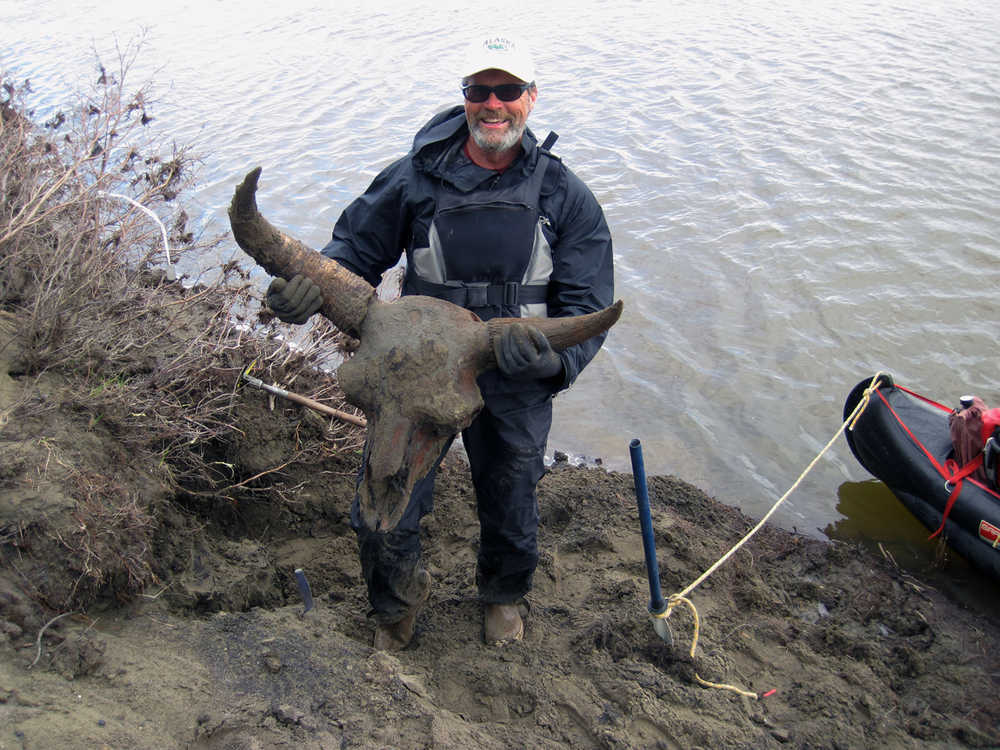ANCHORAGE — Woolly mammoths and other large ice age mammals thrived in northern Alaska until environmental changes turned grasslands into peat and rising sea levels submerged the Bering Land Bridge, cutting off their access to Asia, according to a research paper published Monday.
Researchers from the University of Alaska Fairbanks and the University of California studied bones of ice age horses, steppe bison, mammoths and other animals to determine why they died out in what’s now Arctic Alaska.
“We wanted to know how these large animals responded to the rapid climatic changes that characterized that period of Earth’s history,” said lead author Daniel Mann, an associate professor in the Alaska university’s Department of Geosciences.
The study focuses on the Pleistocene Epoch, the geological epoch from about 1.6 million years ago to about 10,000 years ago, and the transition to the Holocene Epoch, the years since then.
“The environment was changing a lot faster” during the Pleistocene Epoch, he said. That had to do with the “astronomical drivers” of the ice ages.
“The Earth’s climate during the ice ages was much more unstable,” he said. “It changed every few thousand years. It flipped back and forth.”
The researchers tested a hypothesis by retired University of Alaska Fairbanks paleontologist Dale Guthrie that populations of large animals varied as vegetation responded to climate change.
The frequent environmental changes led to times when the grasses, sedges and rushes preferred by horses and bison were abundant. But, as warming continued, land transitioned to peat, which discouraged grasses.
In previous ice ages, the land bridge between what’s now North America and Asia would have allowed mammals to retreat from Alaska for Asia when grasslands decreased and peat increased.
However, when the Earth’s large ice sheets collapsed at the end of the last ice age, the melt led sea water to rise by up to 100 meters in 10,000 years, Mann said. That cut off a migration route to the west for animals in northern Alaska.
“That’s what we’re thinking probably happened,” Mann said of their extinction. “A combination of peat invading what was formerly a well-drained, grassy landscape.”
Migrating east was not an option, and heavy mammals with large bodies and tiny feet were ill-suited for peat, he said, unlike caribou.
The extinction of mammals weighing more than 100 pounds has been attributed to overhunting, rapid climate change, loss of habitat and the introduction of diseases, according to the study. The researchers found little evidence connecting extinction to hunting by humans.
The study was published Monday in the Proceedings of the National Academy of Sciences.

